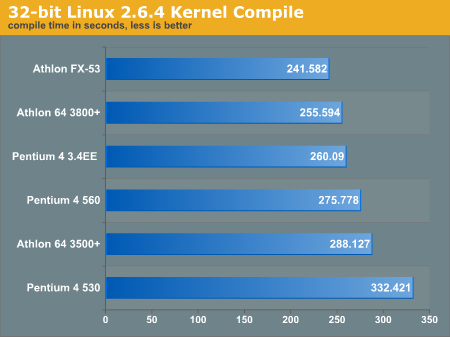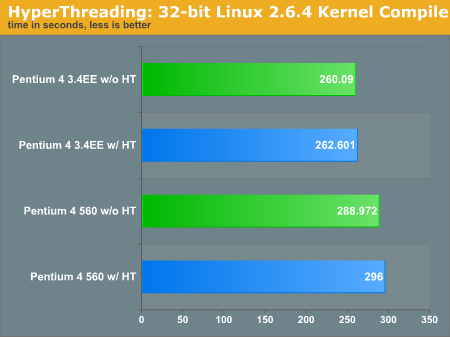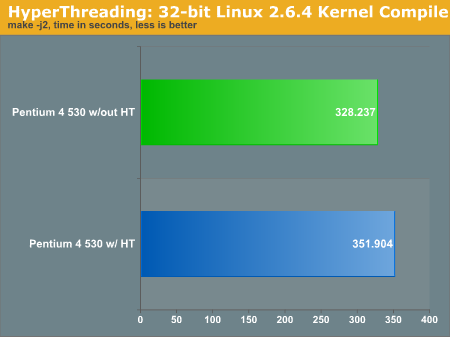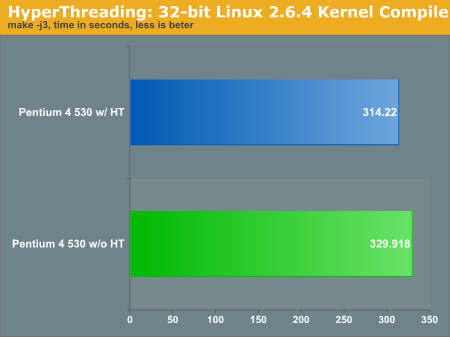Linux Desktop CPU Roundup: Cutting Edge Penguin Performance
by Kristopher Kubicki on September 19, 2004 8:00 PM EST- Posted in
- Linux
Compiling Benchmarks
We get a lot of requests to show some compiling benchmarks. Those playing Gentoo at home should be paying particular attention to this portion of the benchmark. We took the standard Linux 2.6.4 release from kernel.org and compiled it under our 32-bit test bed. We did not cross-platform compile for simplicity, so we are only looking at the 32-bit vanilla kernel. We used the commands as below.# yes "" | make config
# time make

We are greeted with a nice slow performance curve. We have the slower 3.4GHz P4EE overtake its faster 90nm counterpart on several occasions now - a definite trend has set in. Below, you can see how the Intel processors favored when we enabled HyperThreading.

Keep in mind make is not actually threading, we are just determining what kind of a performance hit occurs by enabling the two virtual processors rather than keeping just one active. Obviously running two applications at once will receive performance benefits. The unfortunate fact remains that workstation software continues to remain largely linear. We receive some benfiit by running multiple applications at the same time, like rendering a file and playing an MP3, but there are very few Linux workstation programs that fully utilize multiple threads. Fortunately, we have an article coming up that deals with just how to receive the best performance out of multiple threads (and HyperThreading/SMP configurations) in the works.
We two additional tests with the Prescott processors calculating the time to make the kernel while forcing make to run parallel jobs.


It is very easy to use make -j* incorrectly. There are small perecentage gains by using make -j3 over make -j2 using HyperThreading.










33 Comments
View All Comments
ravedave - Monday, September 20, 2004 - link
What klah is trying to say in too many and too big of words : Make the scale the same for the mouseover pics.Also make the picture height the same as well if possible.
Otherwise a very good article.
Has anyone thought of making an open office benchmark for linux?
klah - Monday, September 20, 2004 - link
Good article, but I have a comment on the mouse-over graphs. They work well in other articles such as the recent DVR-108D article where the scale and axes remain constant. In this case however the layout and in some cases even the scale are different between the two graphs. It would be easier to compare the two if the scale was the same and processors were in the same layout(spacing/location), with the inapplicable processors still listed to maintain the same appearance between the two.If that explanation is nonsensical I can create a few images to try to elucidate my point.
Decoder - Monday, September 20, 2004 - link
"Hold your mouse over for the 64-bit graph."I like to see the 32 and 64 bits on the same graph. Why not use Athlon FX-53 (32) and Athlon FX-53 (64) for labels?